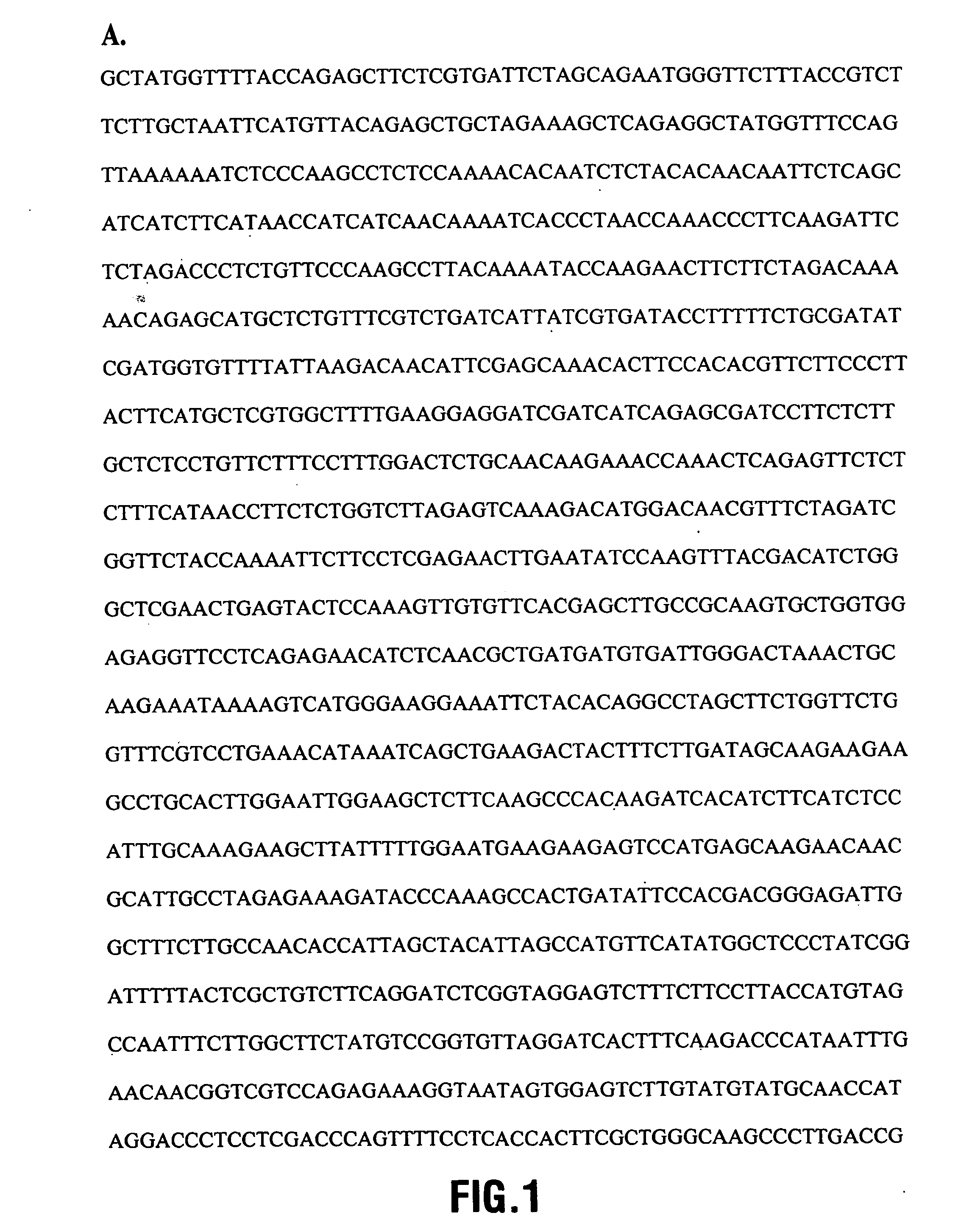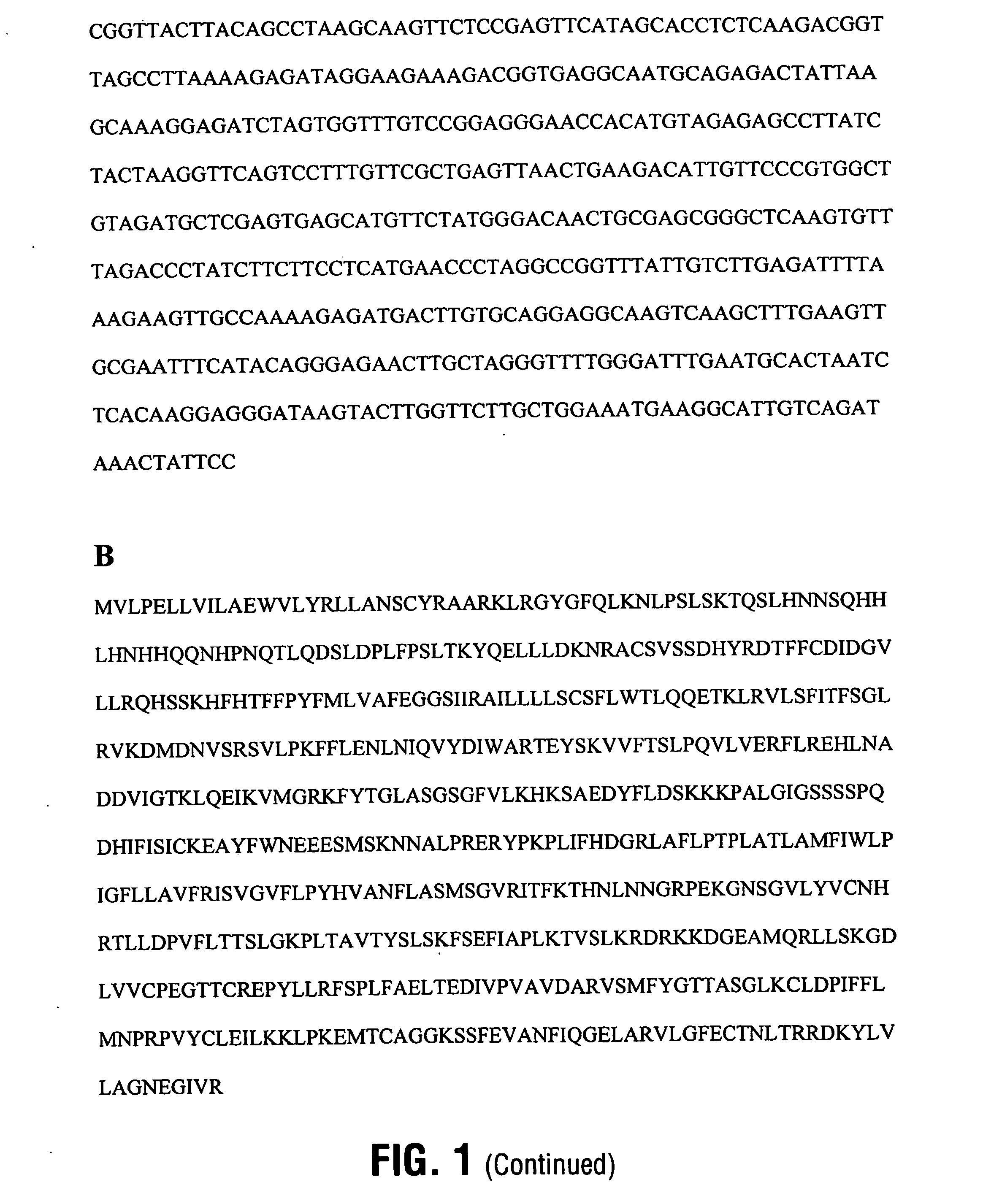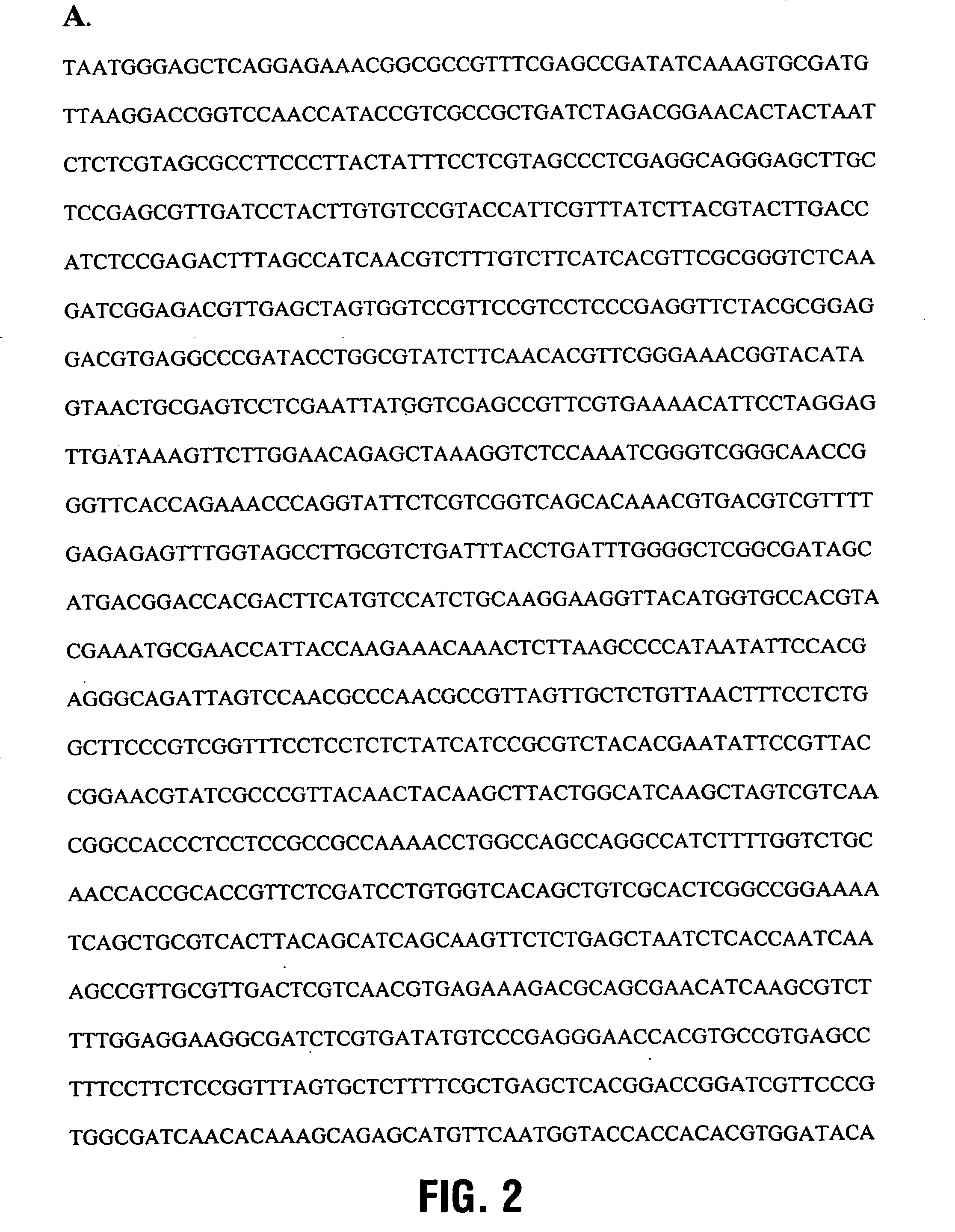Higher plant cytosolic er-based glycerol-3-phosphate acyltransferase genes
a technology of acyltransferase and cytosolic membrane, which is applied in the direction of transferases, organic chemistry, enzymology, etc., can solve the problems of limited knowledge of cytosolic membrane-bound glycerol-3-phosphate acyltransferase, insufficient understanding of the metabolic pathways that regulate lipid metabolism in plants, and difficult work, so as to improve the yield of useful lipid-based products, improve the yield of triacyl tag
- Summary
- Abstract
- Description
- Claims
- Application Information
AI Technical Summary
Benefits of technology
Problems solved by technology
Method used
Image
Examples
example 1
Molecular Cloning of GPAT Genes
[0128] Based on our previous studies with the yeast ER-bound GPAT (Zheng and Zou, 2001) and the general structural information available from other membrane-bound sn-1 acyltransferases (Wilkison and Bell, 1997; Lewin et al., 1999), the inventors made the following assumptions. (i) A plant extraplastidic membrane GPAT will share certain conserved domains with other fatty acyl acyltransferases, and (ii) it will be significantly larger in size than the sn-2 or sn-3 acyltransferases. BLAST searching using the entire yeast GPAT sequences yielded no result in an attempt to identify a plant homologue. However, a series of BLAST searches (Altschul et al., 1990), utilizing a query from a partial sequence encompassing a region conserved between the yeast GPATs and other fatty acyltransferases (including the mammalian dihydroxyacetone phophate acyltransferase), identified a gene (F12K11.15, designated GPAT1) on chromosome 1 of Arabidopsis that encodes a putative...
example 2
GPAT Genes Disclosed Encode G-3-P acyltransferases
[0132] In order to establish the biochemical function of plant GPAT, the inventors over-expressed the GPAT1 and GPAT2 cDNA in a yeast mutant gat1Δ via a multiple copy expression vector pYES-2. The gat1Δ strain harbors a mutation in its GAT1 gene that encodes a major ER-bound G-3-P acyltransferase in yeast. Due to the low residual GPAT activity, functionality of putative membrane-bound G-3-P acyltransferases can be readily tested in this strain (Zheng and Zou, 2001). The inventors assessed the G-3-P acylation activity of total yeast lysate prepared from the gat1Δ strain expressing GPAT1, GPAT2 and the control vector, respectively, using stearyol-CoA and 14C-labeled G-3-P as substrates. Separation of the lipid products of the reaction mixture by thin layer chromatography (TLC) showed an increased generation of lysophosphatidic acid (LPA). Phosphatidic acid (PA) formation was also increased in the reaction, a common observation in acyl...
example 3
Identification of a T-DNA Insertion Mutant gpat1-1
[0134] To investigate the functional significance of GPAT, the inventors took a reverse genetic approach based on PCR screening of an Arabidopsis T-DNA tagged population (Wassilewskija ecotype, WS) available at the University of Wisconsin (Sussman et al., 2000). An Arabidopsis mutant line defective in GPAT1, gpat1-1, with a T-DNA insertion interrupting GPAT1 gene was identified. Sequencing of PCR products generated from GPAT1-specific and T-DNA-specific primers placed the T-DNA insert at the end of exon I of the GPAT1 gene (FIG. 5A). The T-DNA insertion predicted a removal of a segment in the GPAT1 transcript encoding amino acid 297-585 where the critical conserved domains of acyltransferases are located. Homozygous (gpat1-1 / gpat1-1) and heterozygous (GPAT1 / gpat1-1) lines were distinguished through PCR analysis using GPAT1 and T-DNA specific primers to generate fragments diagnostic of wild type (Wt) and gpat1-1 alleles. Analyses of ...
PUM
| Property | Measurement | Unit |
|---|---|---|
| Tm | aaaaa | aaaaa |
| temperature | aaaaa | aaaaa |
| temperature | aaaaa | aaaaa |
Abstract
Description
Claims
Application Information
 Login to View More
Login to View More - R&D
- Intellectual Property
- Life Sciences
- Materials
- Tech Scout
- Unparalleled Data Quality
- Higher Quality Content
- 60% Fewer Hallucinations
Browse by: Latest US Patents, China's latest patents, Technical Efficacy Thesaurus, Application Domain, Technology Topic, Popular Technical Reports.
© 2025 PatSnap. All rights reserved.Legal|Privacy policy|Modern Slavery Act Transparency Statement|Sitemap|About US| Contact US: help@patsnap.com



